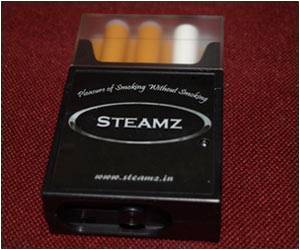The smoking cessation medications bupropion and varenicline may both be associated with changes in the way the brain reacts to smoking cues, making it easier for patients to resist cravings.

"Human brain imaging studies using functional magnetic resonance imaging (fMRI) and positron emission tomography scanning have provided insight into brain regions associated with cue-induced cigarette craving. Nicotine-dependent smokers exhibit activation in brain regions related to attention (prefrontal cortex),emotion (amygdala), reward (ventral tegmental area) and motivation(striatum) while viewing cigarette-related cues."
Bupropion, originally marketed as an antidepressant, was found to enhance smoking cessation in patients with depression and is now one of the most common therapies for smoking cessation in the world. It isknown to reduce cravings in response to smoking cues, but its mechanism for doing so is not well understood.
In one study, Christopher S.Culbertson, Ph.D., of University of California, Los Angeles, andcolleagues assessed changes in brain activation in response to smokingcues among 30 smokers who were randomly assigned to take eitherbupropion or placebo for eight weeks.Participants underwent fMRI scans within one week of joining the studyand again at the end of the eight-week treatment period. During thescans, they were shown 45-second videos that contained either smokingcues-actors and actresses smoking in a variety of settings-or neutralcues, with similar settings but no smoking behaviors.
Participants also used a response box with five buttons on it to report how strongly they craved cigarettes immediately after watching each video. Patients who were treated with bupropion reported less craving in response to smoking cues than did patients who received placebo. Those taking bupropion also showed reduced activation in areas of the brain known to be associated with cravings, including limbic and prefrontal regions.
Among all the participants, regardless of treatment, reports of cravings aligned with fMRI images-that is, those who showed reduced activation in craving-related areas also reported feeling fewer cravings.
Advertisement
In another article, Teresa Franklin, Ph.D., of University of Pennsylvania, Philadelphia, and colleagues studied brain responses tovarenicline, a first-line smoking cessation medication. Varenicline reduces withdrawal symptoms and the reinforcement received from nicotine while smoking.
Advertisement
The brains of smokers were imaged before and after the medication regimen, while 'at rest' and while viewing 10-minute video clips that contained either smoking cuesor non-smoking cues, and they also reported their cravings. Smokers were still smoking during the medication regimen to explicitly examine varenicline effects on cue reactivity independent of withdrawal, whichalso affects brain activity.
In scans performed before the medication regimen, smoking cues activated brain areas involved in drug-motivation, such as the ventral striatumand medial orbitofrontal cortex, and also elicited reports of craving.After the medication regimen, similar patterns of activity persisted inpatients who had taken placebo, whereas those who received varenicline experienced a reduction in brain activity in those regions and inself-reported craving.
In participants who took varenicline, brain activity in the resting condition was selectivity increased in a region known as the lateral orbitofrontal cortex, which is implicated in inhibiting behavior that predicts reward (such as smoking cues). Importantly, increased activation in this area predicted the blunted response in the medial orbitofrontal cortex and ventral striatum, explicitly demonstrating the mechanism underlying varenicline's property to reduce the effects of smoking cues on both the brain and craving.
"The results of our study reveal a distinctive new action that likely contributes to its clinical efficacy," the authors conclude."Unsuccessful smoking cessation is more prevalent in individuals with psychiatric illness, suggesting that they have greater difficulty quitting. Varenicline and other medications that can reduce both withdrawal and cue reactivity may be of special benefit to these subgroups who may also be more vulnerable to relapse in the presence of smoking cues."
Source-Eurekalert










